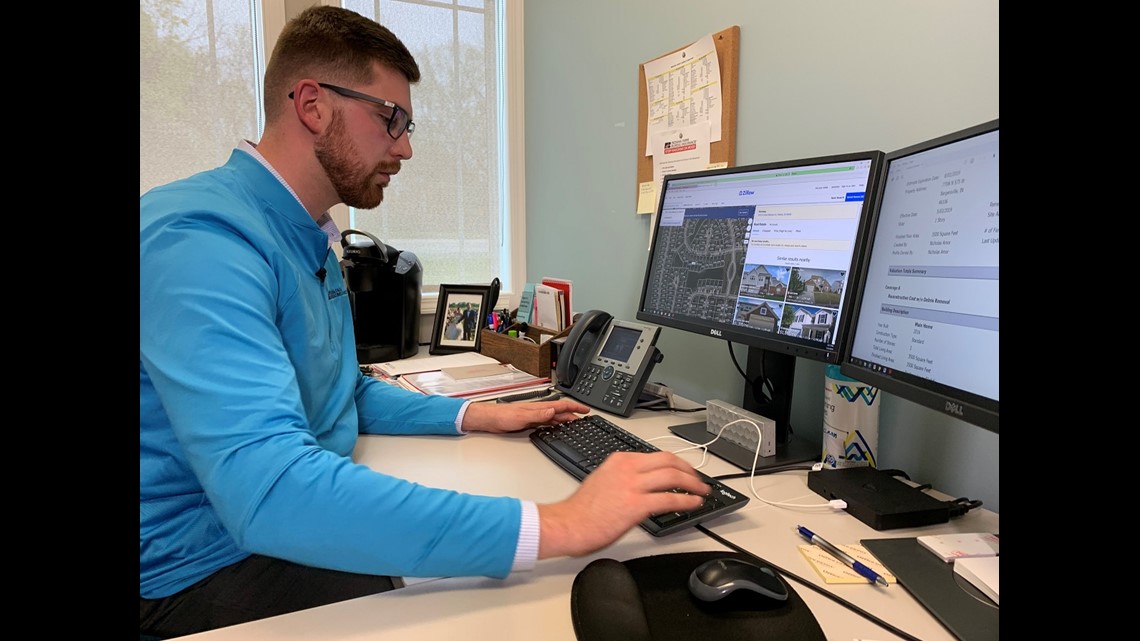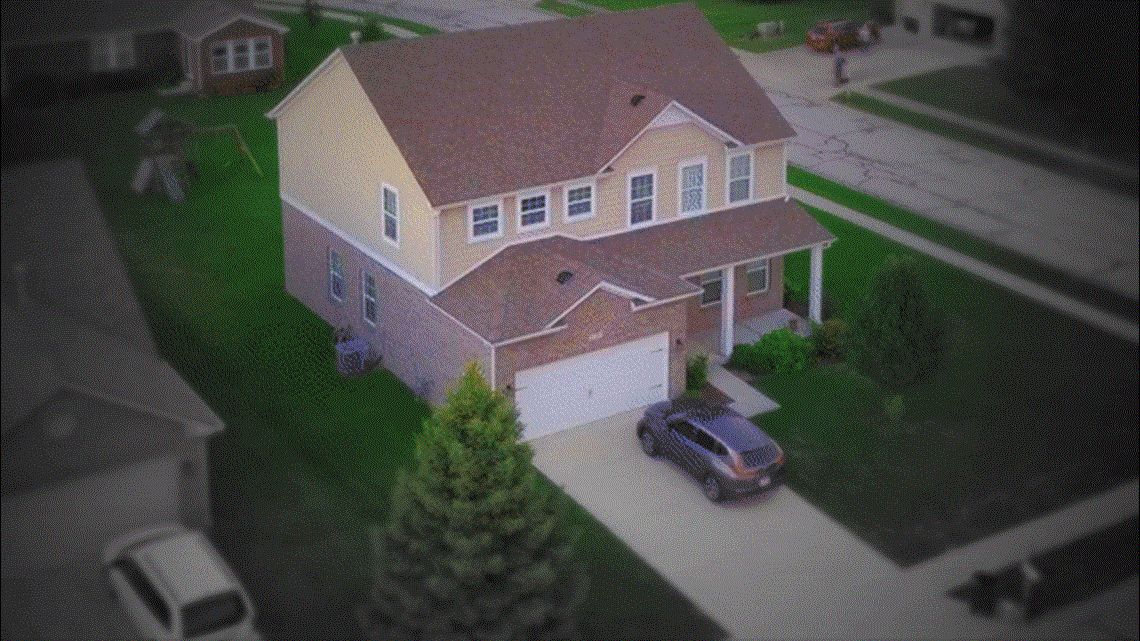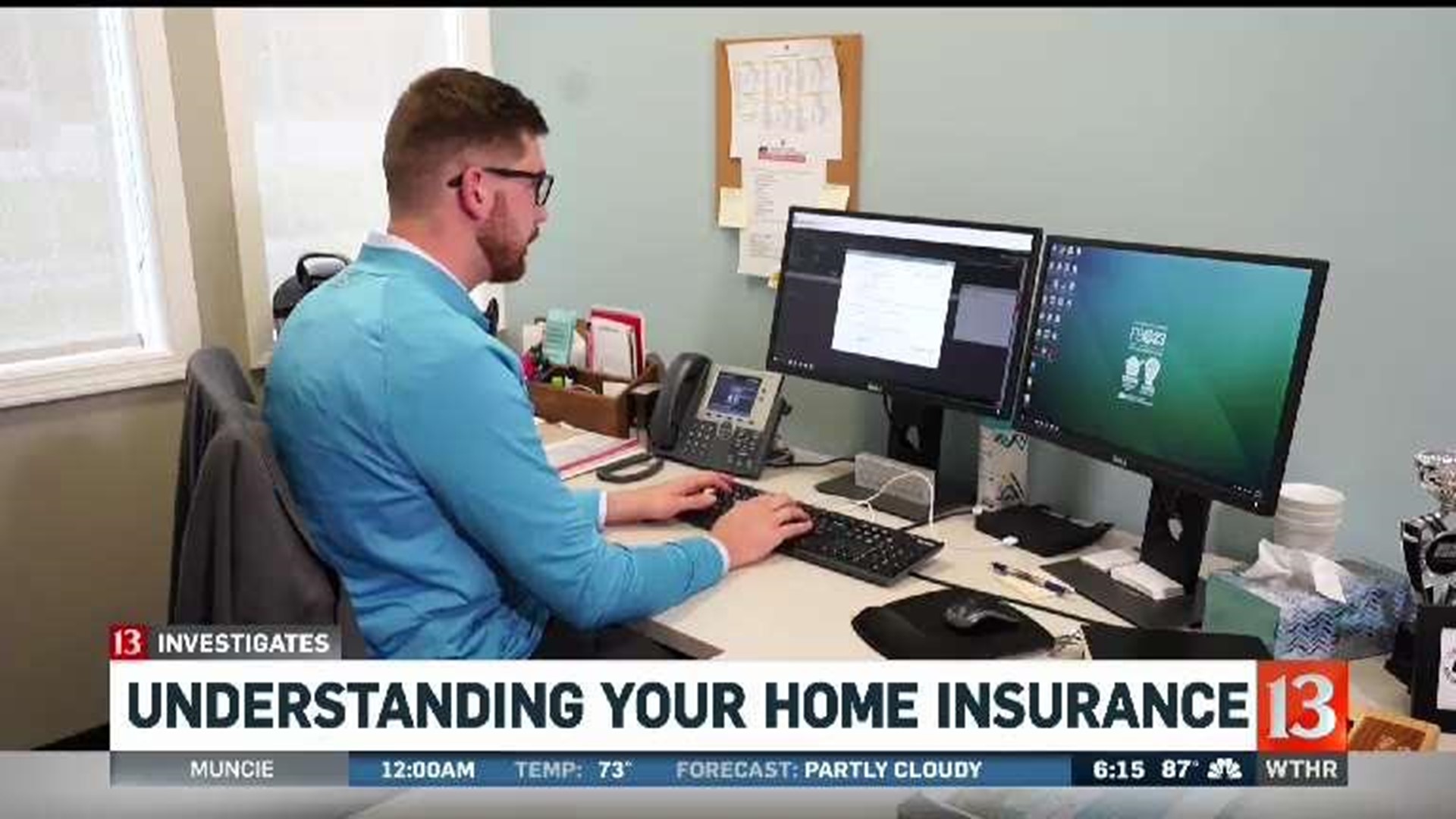INDIANAPOLIS (WTHR) — Have you ever received a refund check from your insurance company? I have. Two of them, in fact. Two beautiful checks totaling $784 delivered right to my mailbox after I got my insurance company to admit it had overcharged me for my home insurance for years.
You might be paying too much for your home insurance, as well. There’s one simple question to ask your insurance agent to find out: Can you please review my Coverage A?
Until recently, I didn’t know what Coverage A was – had never even heard of it. Chances are, you might now know either. But you should. Understanding your home’s Coverage A amount can help you figure out if you’re paying for too much insurance or, even worse, if you don’t have enough. Not knowing or simply forgetting about your homeowner’s insurance policy could be costing you hundreds or even thousands of dollars.
It's like pulling teeth
Before we begin, let’s be honest. Home insurance is one of those topics nobody likes talking about.
Indiana Farm Bureau Insurance recently conducted a survey that underscores that point.
“Half of people say shopping for home insurance is unpleasant and even painful,” said Suzanne Henderson, the company’s communications director. “Some people who took the survey even compared it to getting a root canal or dental work.”
Ouch.
That probably explains why I’ve never had a long conversation with my insurance agent. He’s a really nice guy who promptly responds to my e-mails and who calls me each December to wish me a happy birthday. We’ve briefly discussed basketball and kids and the TV news business. What we do not talk about much: the homeowner’s insurance policy I’ve been renewing for the past 13 years.
I really didn’t think there was any point. My annual insurance premium is rolled into my mortgage payments, and those are deducted from my bank account each month via autopay. Like most Americans, I literally never thought about my homeowner’s insurance. To me, that was a good thing. In retrospect, it was a costly mistake that I discovered by chance.
How I finally figured it out
For years, I’ve ignored the constant barrage of e-mails, ads and letters offering me free insurance quotes. But this past winter, when Nick Amor offered a free quote, I accepted.


Nick is an agent for Indiana Farm Bureau Insurance which, by the way, is not my insurance company. I figured it couldn’t hurt to get a quote from Nick since I hadn’t shopped around for home and auto insurance in more than two decades.
The estimate I got from Nick for my auto coverage was a little higher than my current insurance rates. But the home insurance quote was less – a lot less! Switching to Nick’s company would save me $450 a year on home insurance.
His advice surprised me.
Nick encouraged me not to drop my current insurance carrier, but instead to contact him to see if my insurance company made a mistake in calculating my rates. Nick suspected the backbone of my insurance policy was way out of whack and in serious need of a adjustment.
“Just ask them to reassess you Coverage A,” he told me. I hung up and called my insurance agent right away.
The results of that phone call shocked me. It was a defining moment in my understanding of home insurance and what we’re actually paying for.
What is “Coverage A?”
The problem, as Nick suspected, was a miscalculation of my Coverage A — the most critical element of every home insurance policy.
“If your home burns completely to the ground or you have a catastrophic loss and your home is wiped out, Coverage A is literally what it would cost the insurance company to rebuild it completely from the ground up,” Nick explained.
Some insurance companies refer to this as your Coverage A replacement cost. It may be listed on your insurance policy simply as “dwelling.” (Coverage B, while we’re at it, refers to the cost of replacing non-dwelling structures such as a detached garage or backyard shed, and that is a separate calculation.)
Your Coverage A amount is the most important figure insurance companies use to calculate how much you pay and how much coverage you get. It’s also the base number used to calculate your other coverage limits, such as how much your insurance company will reimburse you for lost or destroyed personal items inside your home (commonly set at 80% of your Coverage A amount).
It’s important to know Coverage A is not the same as or even related to your home’s assessed value. While a house’s resale value may decrease during a downturn in the economy, its Coverage A amount can simultaneously increase due to a tornado outbreak or hurricane that causes the cost of local building supplies to skyrocket. Coverage A calculations determine the estimated cost to rebuild a house, not what a home is actually worth.
Many consumers don’t realize that a lot of insurance companies automatically raise your Coverage A amount every year to account for inflation and regional changes in the cost of building materials. So it’s not unusual for your insurance rates to increase slightly each year due to the annual increase in your Coverage A.
Even fewer consumers know that sometimes those annual increases are too aggressive and, over time, that can really add up. That’s what happened to my homeowner’s insurance. Without noticing, automatic increases caused my costs and coverage to steadily increase year after year until both were ridiculously high.
$10,000 warning signs
Looking back at a decade of increases, I should have seen the warning signs. Many of those years, my Coverage A jumped an eye-popping amount, including annual increases of $10,700, $10,800, $12,200 and $14,900. I never questioned it, and my insurance agent never warned me that something was amiss.
The straw that broke the camel’s back: my most recent Insurance Coverage Summary indicated my new “dwelling coverage limit” (another name for Coverage A) would be increasing $24,700 in a single year, along with a big jump in my annual premium. If I had remodeled the kitchen, finished my attic or added a backyard deck, those increases might have been warranted. But I hadn’t done any of that. My home is exactly the same as it has been for the past 13 years. That’s why I accepted Nick’s offer for an insurance quote – a second opinion on my Coverage A.
“When it’s huge jumps like that, it usually just needs to be reassessed,” Nick told me. “I think where the red flag comes up is if after two or three years, you’ve seen your Coverage A go up consistently – maybe $10,000 at a time – it’s a good opportunity for you to call your insurance agent and say, 'Can you reassess this?’”
Nick knew I needed a reassessment because his Coverage A calculation was vastly different than the one he had seen on my insurance policy. To figure my Coverage A amount, Nick asked me a series of questions about the size, age and building materials of my house. He then entered the information into Indiana Farm Bureau’s replacement cost calculator, and that quickly popped out a figure that was far below the number calculated by my insurance company.
My current insurance agent gladly honored my request for a Coverage A reassessment, and he called me back three days later with the results.
He acknowledged my home’s replacement cost calculation was now $81,400 too high. That means I was paying insurance on $81,400 worth of extra house that I didn’t even own! He patiently went through my Coverage A amounts year by year, and it became painfully clear that I had been overpaying for my home insurance for years.
My insurance agent tried to reassure me by explaining I was over-insured for only about 19 percent more than my home’s actual replacement value. That, he said, was within what the company considered to be an acceptable “window of tolerance” for miscalculations. It was not within MY window of tolerance – especially once I learned my insurance company’s Coverage A error would result in me being overcharged $442 this year alone. (I also learned my insurance policy will pay up to 120% of the Coverage A replacement cost in the event of a total loss, which means I was actually paying for a policy that provided $155,000 of home insurance I did not need.)
I politely demanded a $442 refund for this year’s premium overpayment and got it within two weeks.


Then I went a step further. I requested a refund for past overcharges, too. That would take several additional conversations with my agent and with a regional director of the insurance company. Eventually, they agreed to send me another refund check representing two more years of inflated insurance premiums caused by miscalculated Coverage A figures.
The refund was only a fraction of what I overpayed during the past decade, but I considered the $784 in total reimbursements to be a victory. I also appreciated my insurance company acknowledging the error – even though I had to be the one to point it out – and making a good faith effort to make things right.
Others homeowners affected
I couldn’t keep my newfound discovery a secret, so over the next few months I shared my refund story with family, friends, colleagues, neighbors and anyone else who would listen. Some of them contacted their insurance agents to request a Coverage A reassessment and, like me, discovered they were paying for excess insurance they didn’t want or need.
One neighbor’s Coverage A amount dropped from $351,000 to $333,000, resulting in an annual saving of $193.
A Facebook friend reported that her insurance company adjusted her Coverage A to $112,000 – down from $118,500 – with a yearly savings of $77.
And a relative is now saving more than $400 annually when her bloated Coverage A decreased more than $75,000.


How can some insurance companies be so far off when calculating their customers’ Coverage A amounts?
“These policies sometimes just get put on autopilot and they just continue to trend in this direction,” explained Michael Niland, a spokesman for the Insurance Institute of Indiana. “From time to time, it does happen.”
He told WTHR each insurance company uses its own replacement cost calculator and its own formulas to determine Coverage A values. That means the exact same house could get very different Coverage A assessments, depending on the company doing the calculations. “It definitely varies, and some insurance companies have been working on updating their formulas,” Niland said.
All of the people I’ve spoken to who had inflated Coverage A values and, as a result, were overcharged for their home insurance share the same story: they had been with a single insurance company for at least six years and had not asked for a Coverage A reassessment during that time. It’s a common and costly mistake for consumers who get overly comfortable with their homeowner’s insurance. Time + complacency = unchallenged increases in coverage and cost.
Not covered enough
But for every story like that, I heard from others who found just the opposite: a review of their home’s Coverage A replacement cost revealed they were woefully under-insured.
A friend on the east side of Indy asked for a Coverage A reassessment and learned her home’s replacement cost is $200,000 – far more than the $127,500 coverage limit on her current policy.
Another buddy on the south side thought he was properly insured, only to find out his policy’s Coverage A value is $246,000 – much less than the $375,000 that it would actually cost to rebuild his house from scratch.
Both are now facing unexpected increases in their home insurance premiums and wondering why their insurance agents did not properly advise them about their inadequate insurance levels.
The reality is not all insurance companies increase their customers’ Coverage A values annually to account for inflation. Unchecked over time, that can leave your coverage limits lagging far behind the actual cost to rebuild your home in the event of a disaster. Many homeowners also fail to inform their insurance agents when they make significant upgrades to their homes, meaning the cost of those upgrades is not factored into a home’s updated Coverage A replacement cost.
“About 60 percent of people are actually under-insured,” said Niland, whose organization represents more than two dozen insurance companies that operate in Indiana. “Some people are reluctant to talk to their insurance agent about their coverage because they are worried they’ll actually need more insurance. They don’t want to pay higher premiums, so they are OK not being properly insured. But the worst time to find out you are under-insured is when you’re filing a claim.”
What you can do right now
So how do you know if you’re paying too much for your home insurance – or if you don’t have the coverage you actually need? Stop putting off that talk with your insurance agent. It really won’t be as painful as a root canal.
“It’s a boring conversation. We all get that. But it’s a two to five minute talk -- not a long discussion -- to say: Are you where you need to be to protect you and your family?” Niland said. “There are thousands of agents in Indiana that would be happy to have that conversation with you.”
“How insurance and premiums are calculated, none of that should be a secret,” added Nick. “As a consumer, you should know what you’re buying and what you’re paying for. Don’t be afraid to ask.”
How to make sure your coverage and rates are where they should be:
- Discuss your insurance coverage with an agent. Don’t ignore your agent when she calls. Simply putting your policy away and forgetting about it can really cost you.
- Be proactive. Request a Coverage A review. At least every two years, ask your agent to review your Coverage A replacement cost to make sure you have enough coverage and are not paying too much.
- Shop around. Getting quotes from reputable insurance companies every couple of years will help you verify the replacement cost value quoted by your insurance company is realistic and that you're getting competitive rates. Make sure you are comparing apples to apples, understanding the deductibles and terms of each policy that you are considering.
- Don’t be afraid to switch insurance companies. Sticking with the same insurance company for a long period of time will not guarantee you lower rates or better service. “There is nothing wrong with going out and seeing what the market rate is on your policies and making a change,” said Niland. At the same time, if you have an established relationship with an insurance agent you trust, like the claims service you receive, and know you are getting competitive rates, there is no need to switch simply for the sake of making a change. Constantly chasing the lowest possible rates can backfire if you end up with poor service or inferior benefits.
- Know what you are paying for. If your home were destroyed and needed to be rebuilt, does your homeowner’s insurance policy include Replacement Cost or Actual Cash Value? Replacement Cost is the actual cost to return your home to its original state prior to the loss, and this type of coverage typically costs more. Actual Cash Value (ACV) is equal to the replacement cost minus any depreciation. So if your roof was expected to last twenty years but was destroyed by a hail storm after ten, your insurance company would be obligated to reimburse you for only half the cost of a new roof. This type of coverage is usually less expensive because it reimburses less in the event of a loss.

